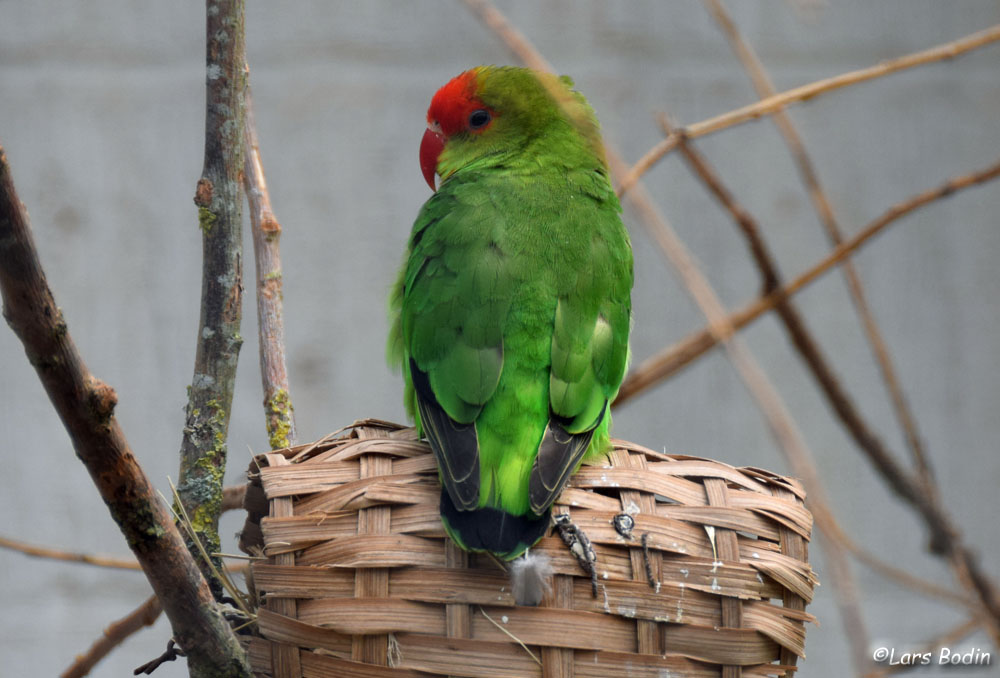Agapornis taranta - Black-winged Lovebird
Black-winged Lovebird – Agapornis taranta (Stanley, 1814) – is the largest of the Lovebirds. It is also known as Abyssinian Lovebird.
It’s a quiet bird, but it can be aggressive to other Lovebirds especially in the breeding season.
Not as common in captivity as some of the other Agapornis species.
It is listed on CITES Appendix II and EU Annex B.
Description
The body color is green with a lighter green on the chest and stomach. The rump and feathers above the tail are light green. The tail is short with a black tip and a yellow color below the tail. The beak is red. The feets are grey.
This specie is sexually dimorphic:
- The male has a red forehead and a red ring of feathers around the eyes. The feathers under the wing are typically black.
- The female has a green head. The feathers under the wing are typically green or brownish black.
Juvenile birds have brownish feathers on their wings. After 8-9 months the young birds get the adult colors.
Size: approx. 16-16.5 but may vary from approx. 15 to 17 cm. The female is typically slightly larger and heavier than the male.
Subspecies
None.
Taxonomy
- Order: Psittaciformes
- Family: Psittaculidae
- Genus: Agapornis
Synonyms
- Danish: Taranta Dværgpapegøje, Tarantadværgpapegøje
- English: Black-winged Lovebird, Abyssinian Lovebird
- French: Inséparable à ailes noires, Inséparable d’Abyssinie, Inséparable taranta
- German: Tarantapapagei
- Portuguese: Inseparável-de-asa-preta
- Spanish: Inseparable Abisinio, Inseparable de Frente Roja
- Scientific: Agapornis taranta
IUCN Red List

https://dx.doi.org/10.2305/IUCN.UK.2016-3.RLTS.T22685334A93068609.en
Downloaded on 9 July 2021
Habitat
Africa: Highland forests of Ethiopia and Eritrea.
The Black-winged Lovebird live in highland forrests and mountain areas, where they are seen in smaller flocks of 4-20 birds and can be observed in altitudes 1.800 – 3.200 m above sea level.
Diet
Wild birds feed on sunflower seeds, corn, juniper, figs and apples.
Aviculture
Wild birds build their nest in a tree cavity.
They can tolerate cold weather but breeding in captivity is rare. The hen loses a part of her breast feathers before she lays the eggs which is very unusual for the Agapornis genus.
Usually the clutch contains 3-4 white eggs. The female incubates the eggs for approx. 23-25 days – the juveniles leave the nest about 45 days after hatching.



